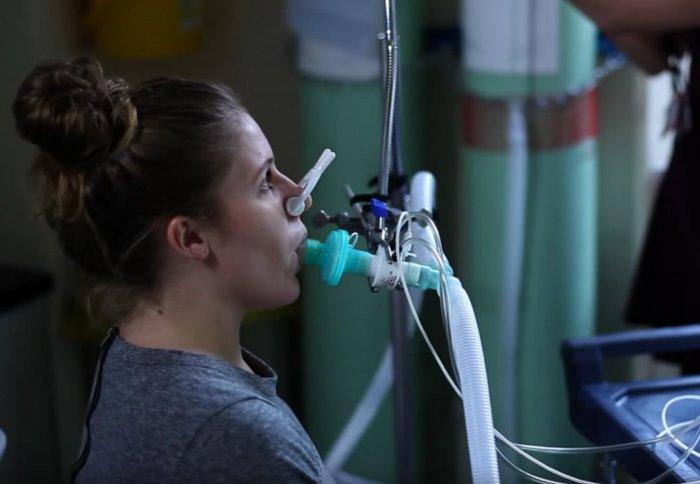COPD: the disease that too often goes undetected

Breathlessness or a 'smokers cough' could be signs of chronic obstructive pulmonary disease (COPD). Prompt diagnosis can prevent the worst effects.
Around 1.2 million people in the UK have been diagnosed with COPD, a combination of chronic bronchitis and emphysema, and many more are unaware they have it. This is a concern, as left untreated, the condition worsens.
COPD is a largely preventable disease. The most common cause is smoking but it can also be a result of inhaling smoke from other sources such as cooking and heating, industrial fumes and pollution. People with COPD are prone to exacerbations, when the symptoms worsen, perhaps from a viral infection, high pollution levels or sudden cold weather. These can be very frightening for patients and are one of the biggest causes of hospital admissions.
Symptoms
“Newly-diagnosed patients often describe symptoms going back 10 to 15 years, but assumed that breathlessness was just a sign of ageing and their cough was just a 'smokers cough', not a sign of a serious lung condition”, says Dr Nicholas Hopkinson, clinical lead for COPD at Royal Brompton Hospital and reader in respiratory medicine at Imperial College London. “People with symptoms of cough, sputum and breathlessness, especially if they have a history of smoking should have a simple test to check their lung function.”
Untreated, COPD gets worse. This can also increase the risk of getting multiple long term medical conditions. “The breathlessness brought on by COPD can mean people stop exercising, so they become more prone to other medical problems like high blood pressure, heart disease, obesity, and diabetes,” says Hopkinson.
Patients are helped to identify the cause, recognise the symptoms, and work out preventive strategies, such as stopping smoking and exercising more – which is proven to help.
Pulmonary rehabilitation
Pulmonary rehabilitation, which combines aerobic exercises and strength training, alongside other patients, guided by a physiotherapist is a key treatment. “Rehabilitation reverses the loss of fitness. Patients make themselves breathless, in a safe environment, making them more confident about exercising,” says Hopkinson. “A key message is that it’s not dangerous to make yourself breathless”.
Patients also learn more about their condition and how to manage it, and are taught relaxation techniques. “Pulmonary rehabilitation is one of the most effective and high value treatments for COPD” says Hopkinson. He also recommends the Breathe Easy groups run by the British Lung Foundation.
People with COPD are commonly prescribed inhalers to open up their airways or reduce inflammation and the risk of chest infections. “It’s important that patients learn to use their inhalers properly to get the most benefit,” says Hopkinson. In serious cases, where damage is limited to certain areas of the lung, surgical treatment to remove the most damaged parts can be very effective, but it is only suitable for a small proportion of patients. “A newer approach we have been investigating, placing valves to block off the worst areas of lung, shows promise and may become available on the NHS within the next few years, as studies have shown significant benefits.”
Article text (excluding photos or graphics) © Imperial College London.
Photos and graphics subject to third party copyright used with permission or © Imperial College London.
Reporter
Nick Hopkinson
National Heart & Lung Institute